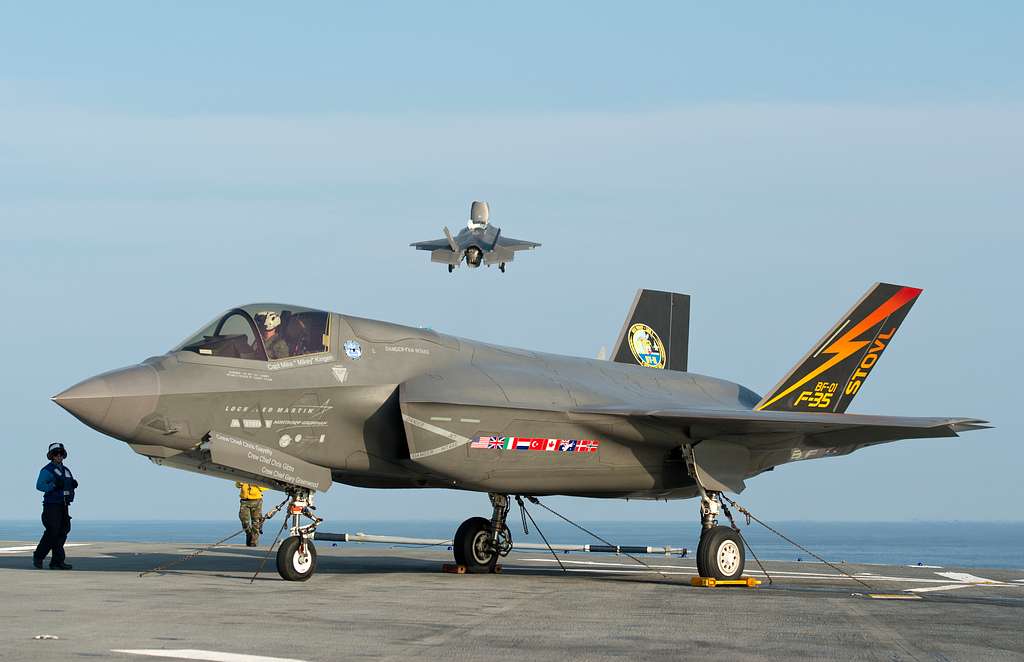

By Asmita - Aug 10, 2025
The British Royal Navy's F-35B Lightning II stealth fighter jet made an emergency landing in India due to fuel shortage, facing technical issues and a 37-day grounding. Amid speculation of espionage, British officials ensured technology security, requiring British engineers to fix the jet in a secure hangar. This incident highlighted global concerns over the F-35 program's high costs, technical problems, and delivery delays, sparking debates on the jet's reliability and operational challenges.

F-35B via PICRYL
LATEST
The British Royal Navy's F-35B Lightning II stealth fighter jet made an emergency landing in Thiruvananthapuram, Kerala, India, on June 14, 2025, and has remained grounded for 37 days. Initially, the jet ran low on fuel and was diverted to Thiruvananthapuram International Airport, which was designated as an emergency recovery airfield. The landing was part of a routine training mission from the HMS Prince of Wales aircraft carrier operating in the Indo-Pacific region. Following the emergency landing, the fighter jet experienced multiple technical issues, including a hydraulic system failure and problems with the auxiliary power unit (APU), preventing it from taking off again.
The jet’s prolonged stay on Indian soil sparked suspicion and speculation in the public and media, with some questioning if the plane was involved in intelligence activities or espionage within Indian airspace. British Members of Parliament raised concerns about the security of the aircraft's stealth coatings and sensor technologies while it was in India. The UK government assured that the sensitive technology remained secure, emphasizing that the British Royal Navy maintained full control and constant monitoring of the aircraft, with support from the Indian Air Force in logistics.
Repairing the advanced fighter jet required significant effort. A team of about 25 British engineers had to be transported to Thiruvananthapuram to troubleshoot and fix the technical faults, resulting from both mechanical failure and adverse weather conditions. Initially, British officials were hesitant to allow the jet to be moved to an Indian Air Force or commercial hangar, fearing potential exposure of classified stealth technology. Eventually, after more than three weeks, the aircraft was transferred to a secure Air India hangar for repair work. The careful handling of the jet highlights the strategic sensitivity of the F-35B and the complexity of maintaining such cutting-edge military equipment abroad.
This incident also drew attention to similar controversies surrounding the F-35 program worldwide. The high cost and frequent technical issues of the U.S.-made F-35 fighter jets, produced by Lockheed Martin, have come under scrutiny. Several other F-35 incidents, including recent crashes in the United States, have escalated debates on the jet’s reliability and maintenance requirements. Additionally, disputes over the costs and delivery timelines of these jets with countries like Switzerland have added to the concerns about this fighter jet’s operational and financial challenges, placing it in the spotlight internationally as a cutting-edge yet contentious military asset.